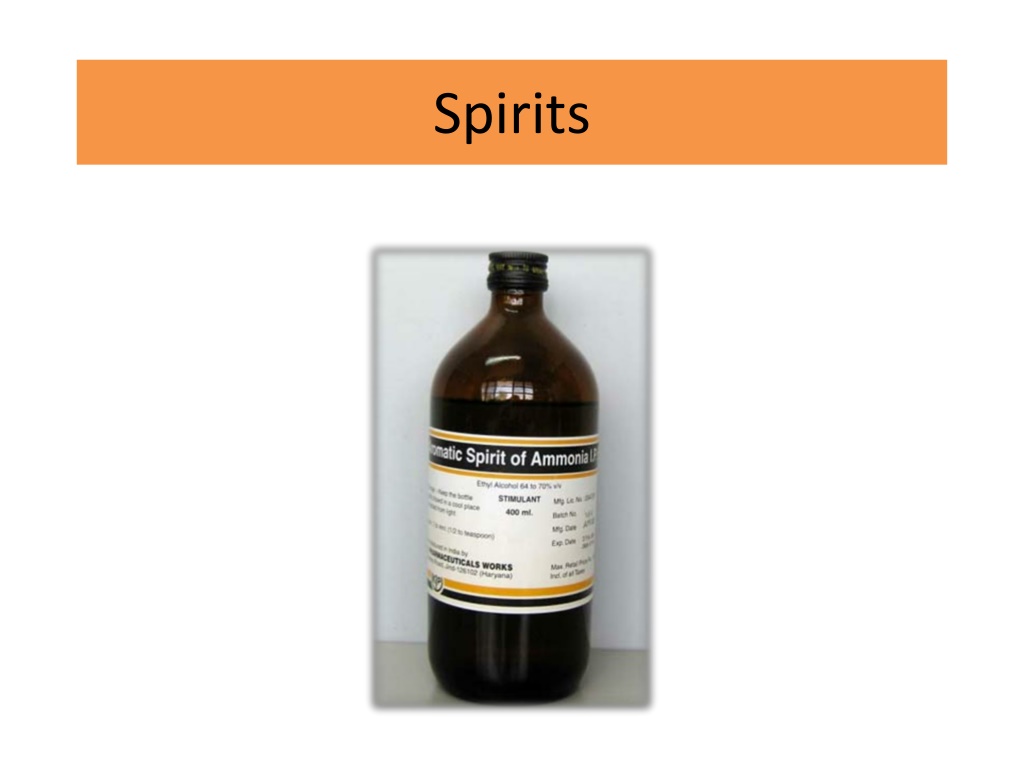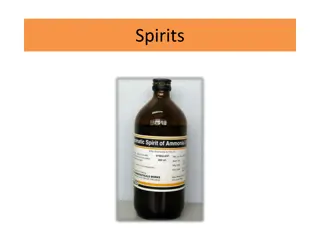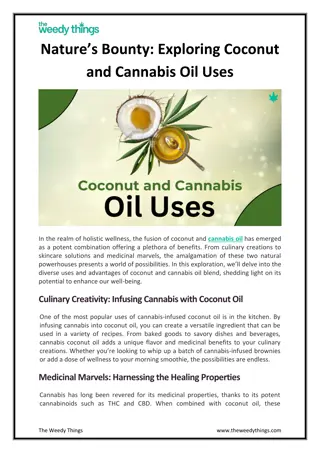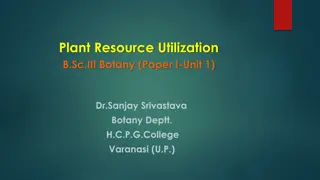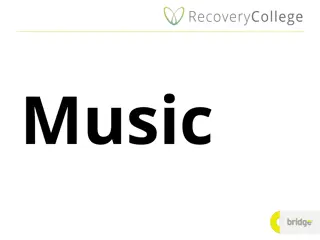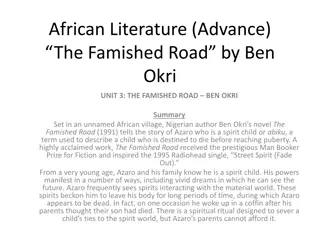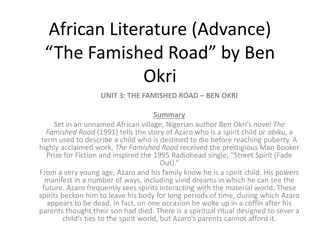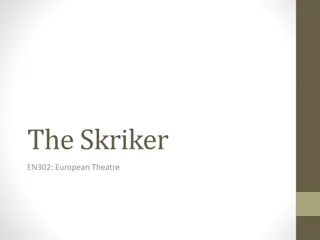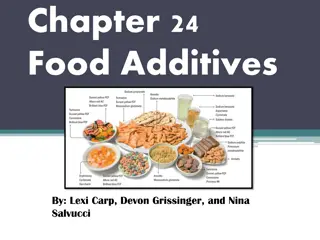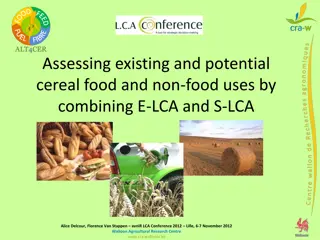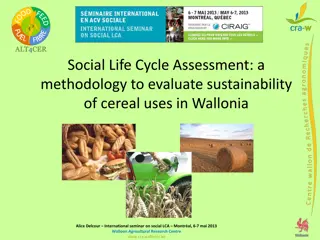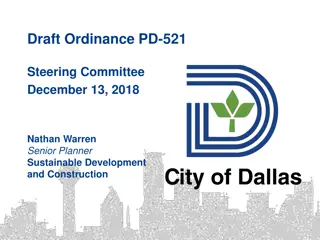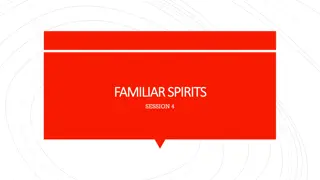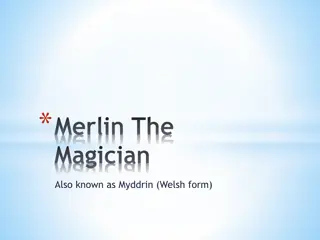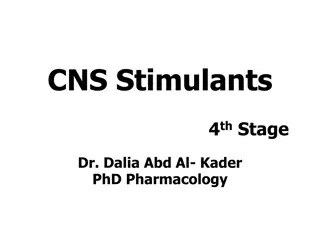Understanding Spirits: Types and Uses
Spirits are alcoholic or hydro-alcoholic solutions of volatile principles, mainly volatile oils, classified into therapeutic and flavoring types. They are prepared by distillation or dissolving volatile substances in alcohol, with varying alcohol content. Proper storage in light-resistant containers is crucial to prevent evaporation and maintain potency. Examples like Spirits of Orange and Compound Spirit of Cardamom showcase specific formulations and methods for preparation.
Download Presentation

Please find below an Image/Link to download the presentation.
The content on the website is provided AS IS for your information and personal use only. It may not be sold, licensed, or shared on other websites without obtaining consent from the author. Download presentation by click this link. If you encounter any issues during the download, it is possible that the publisher has removed the file from their server.
E N D
Presentation Transcript
Spirits Are alcoholic or hydro alcoholic solutions of volatile principle (mostly volatile oil) spirits could be classified according to their uses: Therapeutic spirits: which contain therapeutic volatile substances. Flavoring spirits : which contain flavoring volatile substances.
spirits also known as essences. Spirits prepared by distillation, but nowadays there are prepared by dissolving the volatile substances in alcohol. The amount of volatile substance in spirits varies greatly and no fixed percentage can be given ,but in all cases, volatile substances in the spirits is more than that of aromatic water. Amount of alcohol differ from one spirit to another ,the lowest amount of alcohol found in internal spirits as(aromatic spirit of ammonia) which contain 62-68% alcohol while (camphor spirit) which is used externally contain 80-87%. Spirits when taken orally , they are generally mixed with portion of water to reduce from pungency. In preparation of spirits we must keep in mind that the oil dissolved in alcohol is precipitated causing turbidity when the solutions are mixed with water other than specified in the formula ,so all equipment should be dry and filter paper should be moisten with alcohol. Spirits should be stored in light resistant containers and in cool place to prevent evaporation of alcohol and volatilization of volatile substance or active ingredients and to limit oxidative changes.
Spirits of orange B.P Rx Oil of orange 200 ml Oil of lemon 50 ml Oil of coriander 20 ml Oil of anise 5 ml Alcohol Q.S 1000 ml Method: According to simple solution method, mix oils with sufficient alcohol to make the product measure 1000 ml. Note : Anise oil use as carminative and mild expectorant (as cough mixtures and lozenges)
Compound spirit of cardamom B.P Rx Oil of cardamom 20 ml Oil of orange 20 ml Of cinnamon 2 ml Oil of clove 1 ml Anethol 1 ml Oil of carawya 0.2 ml Alcohol Q.S 200 ml Method: Mix the oils and anethol with sufficient alcohol to make the product measure 200 ml. Notes: - Carawya oil used as antispasmodic agent ,mainly in children mixtures. Cinnamon oil used as carminative and flavouring agent. Cardamom used as carminative and flavouring agent. Anethol used as mild expectorant in cough mixtures and lozenges, also as flavouring agent. Aromatic spirit of ammonia Rx Ammonium carbonate 34 g Dilute solution of ammonia 90 ml Oil of lemon 10 ml Oil lavender 1 ml Oil of myristica 1 ml Alcohol 700 ml D.W Q.S 1000 ml
Method: Dissolve the solid agent in dilute solution of ammonia with little amount of water , while the oil dissolved in alcohol also with little amount of water, and then add the aqueous solution into alcoholic one after filtering each one. Note : In preparation of aromatic spirit of ammonia we make filtration due to the presence of water with alcohol that lead to precipitation of volatile oil uses of official spirits : 1. Carminative (aromatic spirit of ammonia) 2. Antacid (aromatic acid of ammonia) 3. Mild reflex circulatory stimulant (camphor spirit) 4. Flavouring agent (cinnamon spirit)
Elixir is clear, sweetened hydro-alcoholic solution. Alcoholic content vary from 10% to 12% and up to 40% Intended for oral use usually flavoured to enhance palatability. Usually less sweet than syrups and less viscous. They are classified into two classes, Medicated /Non-Medicated Medicated elixir is used for therapeutic effects. Examples of medicated elixirs are 1. Antihistamine Elixir: Diphenhydramine HCl 2. Analgesic Elixir: acetaminophen 3. Antispasmodic Elixir: hyoscyamine sulfate 4. Sedative Elixir: phenobarbital
Non medicated elixirs Do not contain any therapeutic agent can be used for dilution of an existing medicated elixir. These only contain Water, alcohol, sweetening agent and coloring agent Most common non medicated elixir is following: Aromatic elixir perfumes Compound benzaldehyde elixir Isoalcoholic elixir
Advantages of Elixirs Better able to maintain both water-soluble and alcohol-soluble components in solution. Has a stable characteristic. Easily prepared by simple solution. Disadvantages Less effective than syrups in masking taste of medicated substances. Contains alcohol, accentuates saline taste of bromides
Elixirs Components of an elixir Purified water and alcohol are the main component of the elixir. This is employed as a co-solvent to ensure solubility of all ingredients. the concentration of alcohol varies depending on the formulation. Generally, the concentration of alcohol is 8-10% v/v (Low alcoholic Elixir); however, in some preparations, the concentration of alcohol may be greater than 40% v/v.(High alcoholic Elixir)
Polyol co-solvents, e.g. propylene glycol, glycerol, may be employed to enhance the solubility of the therapeutic agent and associated excipients. Sweetening agents as Sucrose , saccharine, and sorbitol . Less concentration is required as compared to syrups Flavors and colors. All pharmaceutical elixirs contain flavors and colors to increase the palatability and enhance the aesthetic qualities of the formulation. Preservatives Elixirs containing more than 10 to 12% of alcohol are usually self-preserving and do not require the addition of an antimicrobial agent. Otherwise Parabens and Benzoates added.
Method of preparation: 1. Dissolve the water-soluble ingredients in part of the water, 2. Dissolve the sucrose in it. 3. Dissolve the other ingredients in the alcohol (5-40%) 4. The aqueous solution is then added to the alcoholic solution with constant stirring and make up the volume with the solvent or vehicle specified in the formulation. 5. Sucrose increases viscosity but decreases the solubility properties of water so in addition of viscosity-enhancing agents, e.g. hydrophilic polymers, may be required to optimize the rheological properties of elixirs. 6. Elixirs should be brilliantly clear and therefore strained or filtered, if necessary, subjected to clarifying action of purified talc. 7. Elixirs should be stored in tight ,light resistant containers and protected from excessive heat because of their usual content of volatile oil and alcohol.
Differences between elixirs and syrups 1. Elixirs are usually less sweet and less viscous than syrups because they contain a lower proportion of sugar and consequently are less effective than syrups in masking the taste of medicinal substances. 2. Elixirs are better able than aqueous syrups to maintain both water soluble and alcohol soluble components in solution because of their hydroalcoholic character. 3. From manufacturing stand point, elixirs are preferred over syrup due to their stability and ease of preparation (by simple solution).
Notes for Preparation of elixir Elixirs are usually prepared by simple solution method with agitation and / or by the admixture of two or more liquid ingredients. Alcohol soluble and water soluble components are generally dissolved separately in alcohol and purified water, respectively. Then the aqueous solution is added to alcoholic solution rather than the reverse, in order to maintain the highest possible alcoholic strength at all times so that minimal separation of alcohol- soluble components occurs. When the two solutions are completely mixed the mixture is made to volume with specified solvent or vehicle.
Note :- In preparation of elixirs frequently the final mixture will not be clear (cloud) due to separation of some flavouring oils by reduced alcoholic concentrations. If this occurs the elixir is usually permitted to stand for a prescribed number of hours , to ensure the saturation of hydro-alcoholic solvents and to permit the oil globules to coalesce so that they are more easily removed by filtration. comparison between elixirs and spirits Elixirs 1.Contain sweetening agent 1. not contain 2.More viscous 2. less viscous 3.Need preservative if the 3. not need alcohol content is less than 10-12% 4.Water and alcohol 4. alcohol is usually the primary are usually the primary solvent 5.For internal use only 5. used internally and externally 6. Concentration of alcohol is 4-40% 6. concentration of alcohol is 62-87% spirits
Phenobarbital elixir U.S.P Rx Phenobarbital 4 g Tr. of orange peel 30 ml Solution of amaranth 10 ml Alcohol 125 ml Glycerin 450 ml Syrup 250 ml D.W Q.S 1000 ml Method: 1. Dissolve the phenobarbital in alcohol 2. Add the tincture of orange peel ,glycerin, syrup, amaranth solution and add sufficient water to produce 1000 ml ,mix well and filter. Notes : The phenobarbital elixir used as sedetive and hypnotic. Glycerin used as thicknening agent ,also increase the solubility of phenobarb . Tr.of orange peel used as flavouring agent. Solution of ammaranth used as colouring agent. Syrup used as sweetening agent.
Pediatric paracetamol elixir B.P Rx Paracetamol 120 mg Alcohol 0.5 ml Chloroform spirit 0.1 ml Propylene glycol 0.5 ml Conc. rose berry juice 0.125 ml Amaranth solution 0.01 ml Invert syrup 1.375 Glycerol Q.S 5ml Method: 1. Dissolve paracetamol in alcohol. 2. Add chloroform spirit ,propylene glycol, juice, amaranth solution, invert syrup. 3. Complete the volume by addition of glycerol.
